FTC Disclosure: If you make a purchase via a link on this site, We may receive a small commission on the transaction - at no added cost to you. Thank you!
Hummingbird Feeder Bees
along with Yellow Jackets, Hornets,
Wasps and Honeybees.
5 Tips To Keep hummingbird feeder
bees away.
1. Avoid using leaky feeders.
2. Clean feeders and feeder ports.
3. Move your feeders out of the sun into the shade.
4. Use feeders with bee guards
5. Use a Tray/Dish style feeder.
The Very Best Proven way to keep bees and other sugar loving insects from a hummingbird feeder is to use a tray or dish style feeder!
Varieties of bees such as honeybees, yellow jackets, hornets, and wasps are a serious problem at hummingbird feeders.
Hummingbirds will desert a feeder infested with bees.
We tried every solution found on the web to rid bees from our feeders.
After many experiments...............
We Found the Ultimate Bee Proof Feeder!
See Our Story of Experiments Below
HummZinger Ultra Hummingbird Feeder
See my Review of The HummZinger Ultra Hummingbird Feeder
How To Make a Tray/Dish Feeder
Bee Proof
Directions:
When filling a Tray Hummingbird Feeder keep the level of nectar low enough so Bees will not be able to reach the nectar!
They will eventually give up and abandon the feeder.
Our hummers will still easily sip the nectar with their long tongues.
See Our Selection of Tray/Dish Style Feeders
How to Get rid of Bees at Your Hummingbird Feeders:
1. Avoid using leaky feeders.
Some cheap plastic feeders can leak when they are exposed to the elements.
The sugar water mix is a liquid and will expand in the heat causing the feeder to leak.
So check your feeder for leakage regularly.
We recommend buying a better feeder that cannot leak such as the Dr.JB’s hummingbird feeder.
This feeder is a very good quality feeder, with a durability that will last for many years.
We have been using this feeder for 13 years and it is still in great condition except for some "sun fading" in the color.
Don’t use feeders with yellow decorations, especially those that look like flowers, as bees will investigate the flowers looking for food.
2. Clean feeders and feeder ports.
When you fill your feeders bring them inside and pour hot water over the feeding ports.
This will remove the built up nectar that attracts bees.
Then carefully wipe the outside of the feeder with a warm rag to clean it completely.
You usually won’t find as many bees at a properly cleaned feeder.
Here are some cleaning tips.
3. Move your feeder.
Hummer Helper Hummer Helmet Baffle
Bees (especially honeybees) prefer feeders in direct sunlight.
Move your feeder to the shade if possible.
Or hang your feeder under a shade dome.
4. Use feeders with bee guards
Pinch Waist Red Glass
Hummingbird Feeder
Many hummingbird feeders are available with built-in bee guards.
Bee guards prevent bees, wasps, yellow jackets and hornets from reaching the nectar.
5. Use a Tray/Dish style feeder.
HummZinger Ultra
Tray Hummingbird Feeder
Keeping the level of nectar low enough in the feeder will deter bees because they won't be able to reach the nectar and ultimately will give up and abandon the feeder.
The photo below is an example of one of our feeders taken over by Honeybees.
One of our neighbors has Honeybee hives.
I don't think "good fences make for good neighbors" would help in this case!
Honeybees can take over a feeder. On August 3, 2015 one of our feeders was taken over by Honeybees. (See Photo below)
Our Experience with Honeybees taking over one of our feeders!
Our plans:
Plan #1: As suggested by a website on Honeybees, we are going try making a nectar solution of 5 parts water to 1 part sugar rather than the usual 4 to 1 ratio. Supposedly, Honeybees will not be interested in this mix because the nectar content will not be high enough for their needs. However, hummingbirds are supposed to be satisfied with this ratio temporarily. If this works, and the bees have given up on the feeder, we will go back to the usual 4 to 1 ratio.
Results:As you can see in the photo below the 5 to 1 ratio of nectar did not work. Even after 5 hours, the bees were still occupying the feeder. So, plan #1 did not work.
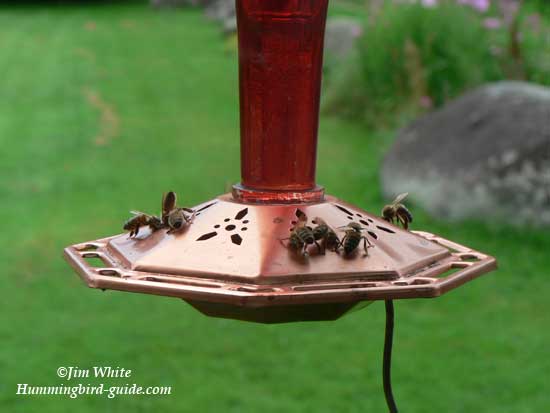 The Feeder with a 5 to 1 Nectar Ratio
The Feeder with a 5 to 1 Nectar RatioPlan #2: If step #1 fails, we will place a yellow dish (bees seem to be attracted to yellow) with 2 parts water to 1 part sugar in the same vicinity near the feeder on a ladder. If the bees take to this, we will remove the feeder and move the dish a few feet each day away from its location. Eventually, we will re-hang the feeder after a few days.
Results: As evident in the photos below, this option seems to be working. Within an hour the bees left the feeder to occupy the bowl with the 2 to 1 ratio of nectar.
Note: We do not recommend this method since there is an issue of bees drowning in the nectar solution. We absolutely do not want this to happen since bees are such a critical creature in the eco balance of nature!
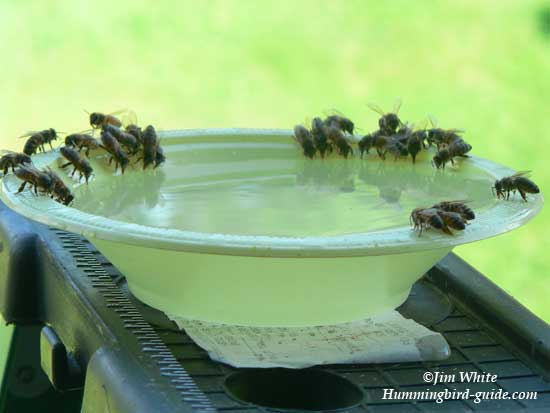 Honeybees on the Bowl with the 2 to 1 Ratio of Nectar
Honeybees on the Bowl with the 2 to 1 Ratio of Nectar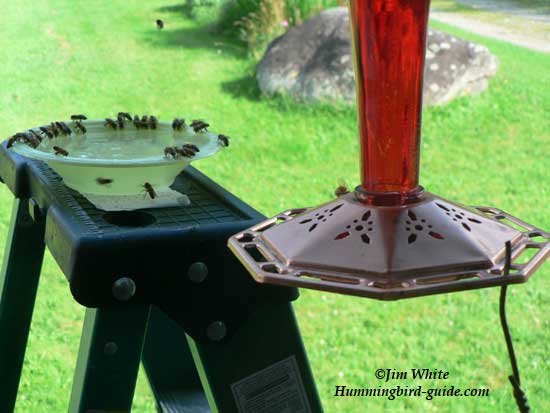 Honeybees Using the Bowl Rather than the Feeder
Honeybees Using the Bowl Rather than the FeederPlan #3: I hung the feeder again filled with the usual 4 to 1 ratio of nectar and the bees occupied both the bowl and the feeder. Since this happened, this step is to remove both the high concentrate nectar bowl and the feeder until the bees give up and search elsewhere for a nectar supply.
Results: Day 1 - After removing the bowl and the feeder, a few bees are still returning to search for the nectar supplies. Below is a photo of day 1 and the bees looking for the the feeder. The photo is our "BirdCam" which was used for live streaming of the feeder before the bees invaded the feeder. (We will see how many days it takes for the bees to finally forget about the feeder.)
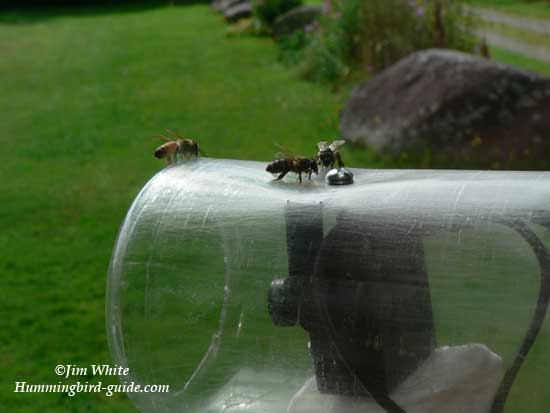 The Honeybees on our "BirdCam" searching for the nectar in the feeder.
The Honeybees on our "BirdCam" searching for the nectar in the feeder.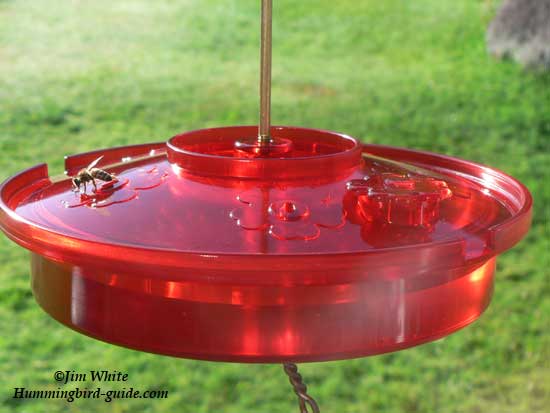 A Tray Feeder with only one bee investigating
A Tray Feeder with only one bee investigatingPlan #4: I left no feeders hung and available to the bees for one (1) day and decided to hang a "Tray Feeder" to test the "Bee Resistance" of this style feeder.
Results: I can say that they are definitely resistant to bees since the bees (wasps, hornets, yellow jackets) cannot reach the nectar through the ports. The level is too low for them to reach. At first there where many bees trying to get to the nectar but as time went by there were fewer and fewer bees at the feeder. Within an hour the newly displayed feeder was visited by our hummingbirds as seen in the photos below.
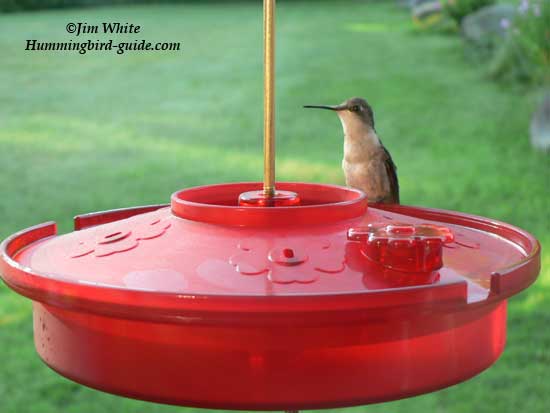 A Female Ruby-throated Hummingbird visiting the newly displayed tray feeder.
A Female Ruby-throated Hummingbird visiting the newly displayed tray feeder.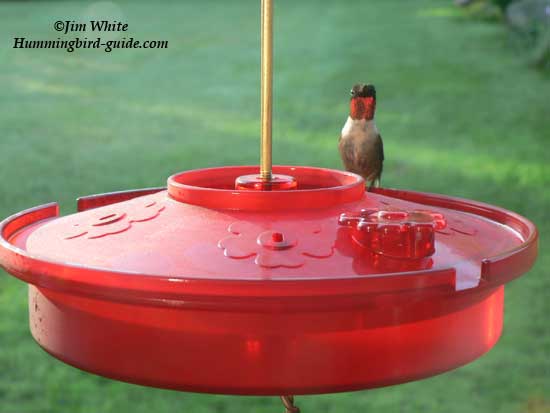 A Male Ruby-throated Hummingbird visiting the newly displayed tray feeder.
A Male Ruby-throated Hummingbird visiting the newly displayed tray feeder.The "Tray Feeder" used here was the "Hummingbird Haven" feeder.
You can purchase one here.
CONCLUSION:
The Ultimate Bee Proof Feeder Is A
Tray/Dish Feeder.
Use a Tray or Dish Feeder.
Tray or dish feeders are very "bee resistant" if you keep the nectar low enough so the bees cannot reach the nectar when they stick their heads through the ports of the feeder.
They will eventually give up and leave the feeder.
(In my opinion this is the best solution to a bee, wasp, hornet or yellow jacket problem.)
Use a bee guard or a feeder with bee guards.
We feel that one
of the simplest and least time consuming answers to a bee problem is to
buy bee guards. A Bee guard is a mesh or plastic that prevents the bees
from accessing the nectar. The syrup level is too low for bees to reach
it with this barrier but the hummingbirds can use their long tongues.
Some Bee Resistant Feeders
Bee Guards
Put out extra feeders.
Some of our visitors told us that they
put out more feeders for the hummingbirds and simply allow the bees to
have their own easily accessible feeder. People also paint the feeder
ports yellow on the feeder for the bees. There are feeders available with yellow feeding ports.
Note: We have never tried this but if there is an easy access feeder for the bees, it makes sense that they will us this feeder instead of the other feeders that are not so accessible.
Hummingbird Feeder Bees prefer flowers.
Plant more flowers.
Many bees prefer flower nectar to
feeders. Planting a hummingbird flower garden will satisfy some of the
bees. Hummingbird flowers have a good nectar count that is enjoyed by
both bees and hummingbirds. Here you will find a list of hummingbird
flowers listed by growing zone. For those of you who are new to
gardening, this page will list the flowers that grow where you live based on
climate and growing conditions.
Hummingbird feeder bees, yellow jackets, hornets, and
wasps enjoy nectar but can sometimes sting, especially if they sense
danger. Be extra careful around them. Some of us, myself included, are
allergic to bees and should avoid them whenever possible.
 |
WARNING! |
What Not To Do!
DO NOT USE INSECTICIDES or other poisons in or around your hummingbird feeders. Even though they are not ingested directly, these chemicals can harm the hummingbirds by breathing in the fumes.
Did you know that the scent of the insecticide is meant to deter pests? Hummingbirds have no sense of smell, so they are especially vulnerable. They will not fly away when exposed.
Hummingbirds preen (clean) their feathers regularly. If they come in contact with the chemicals and then clean the feathers with their tongue, this is another way they can become ill.
Hummingbird feeder bees, wasps, and hornets annoy us but they are nature’s pollinators too. By using the more natural methods mentioned here, we can avoid killing both the bees and hummingbirds.
Mother Nature Will Be Happier Too!!!
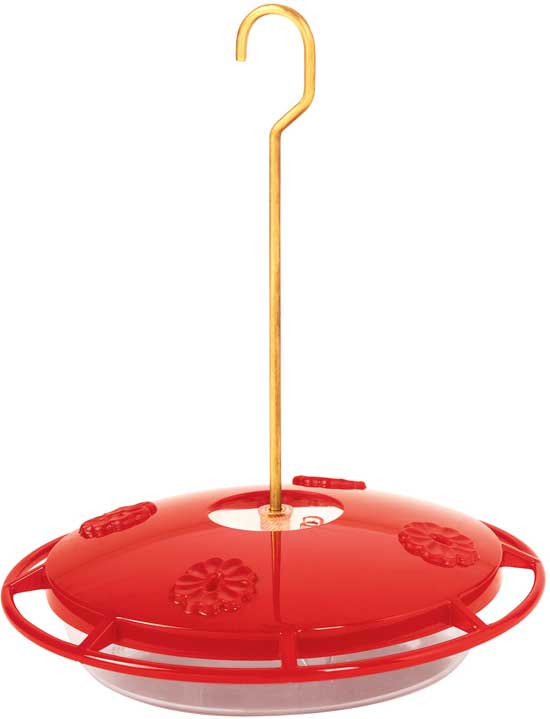
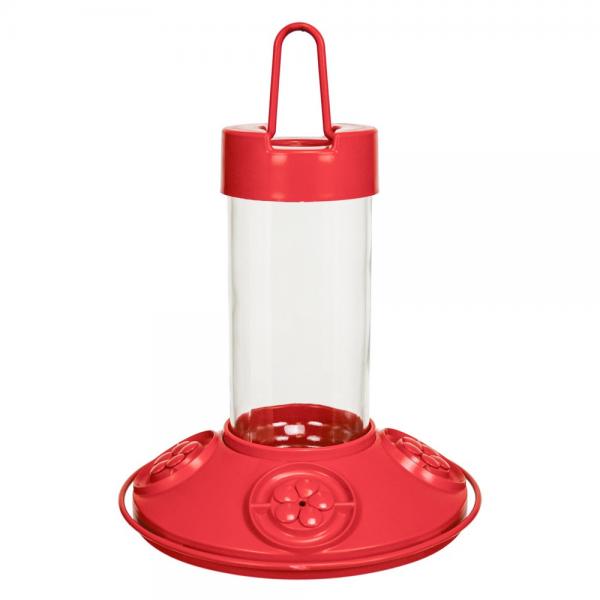
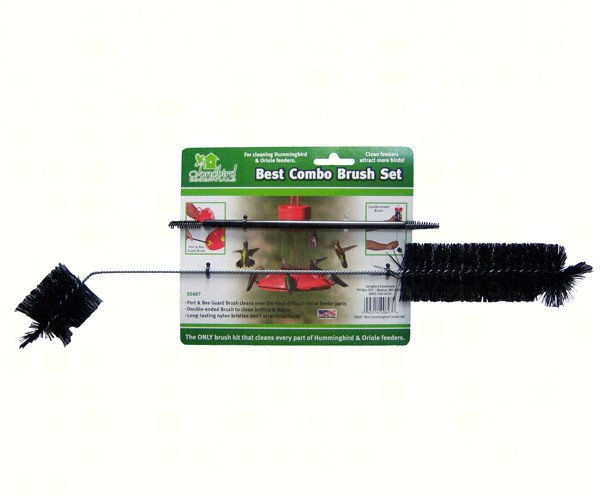
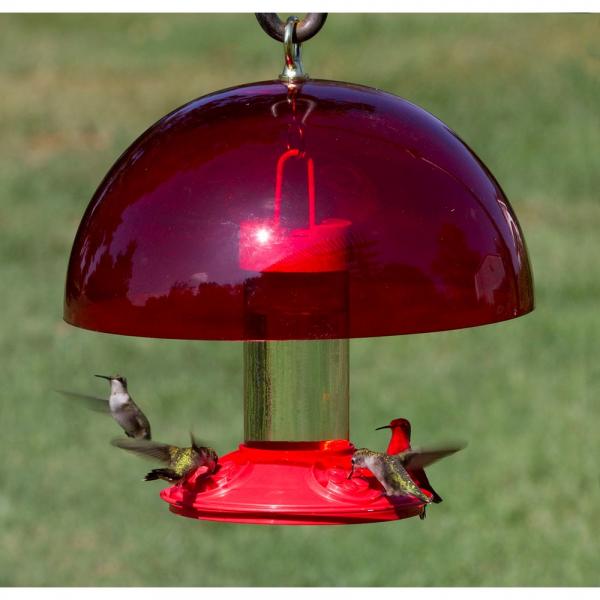
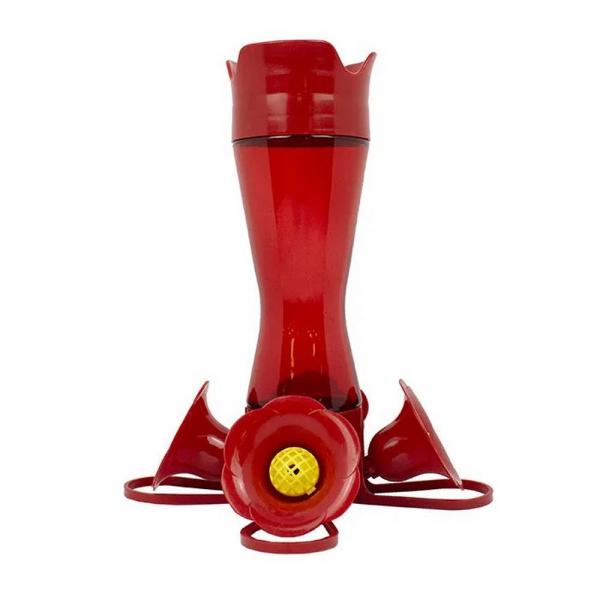
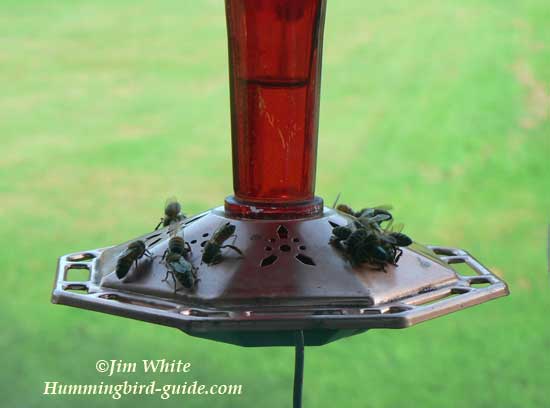
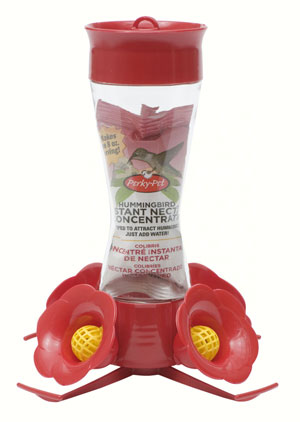
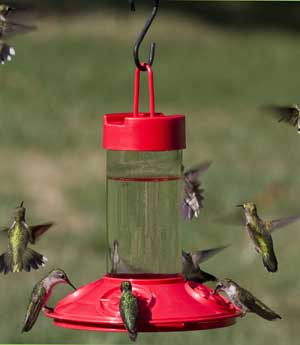
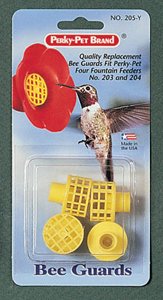
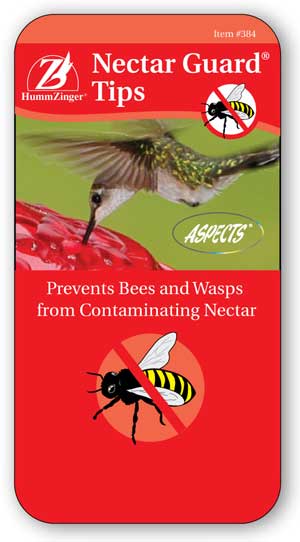
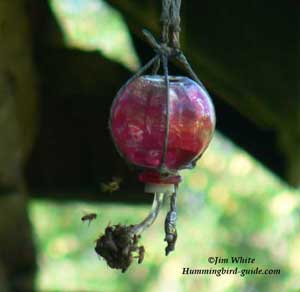
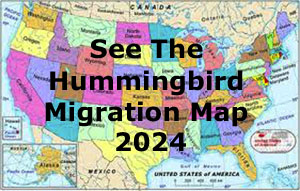

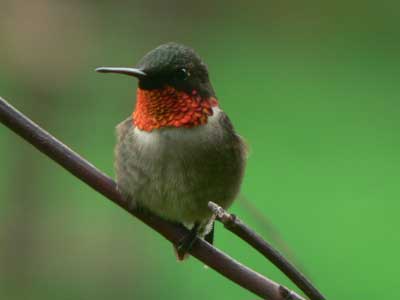
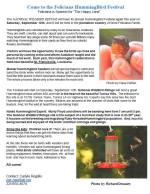
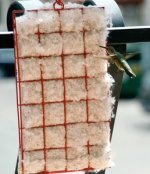





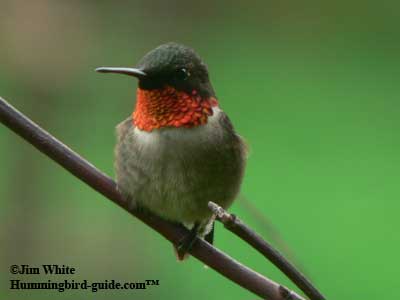
New! Comments
Have your say about what you just read! Leave me a comment in the box below.